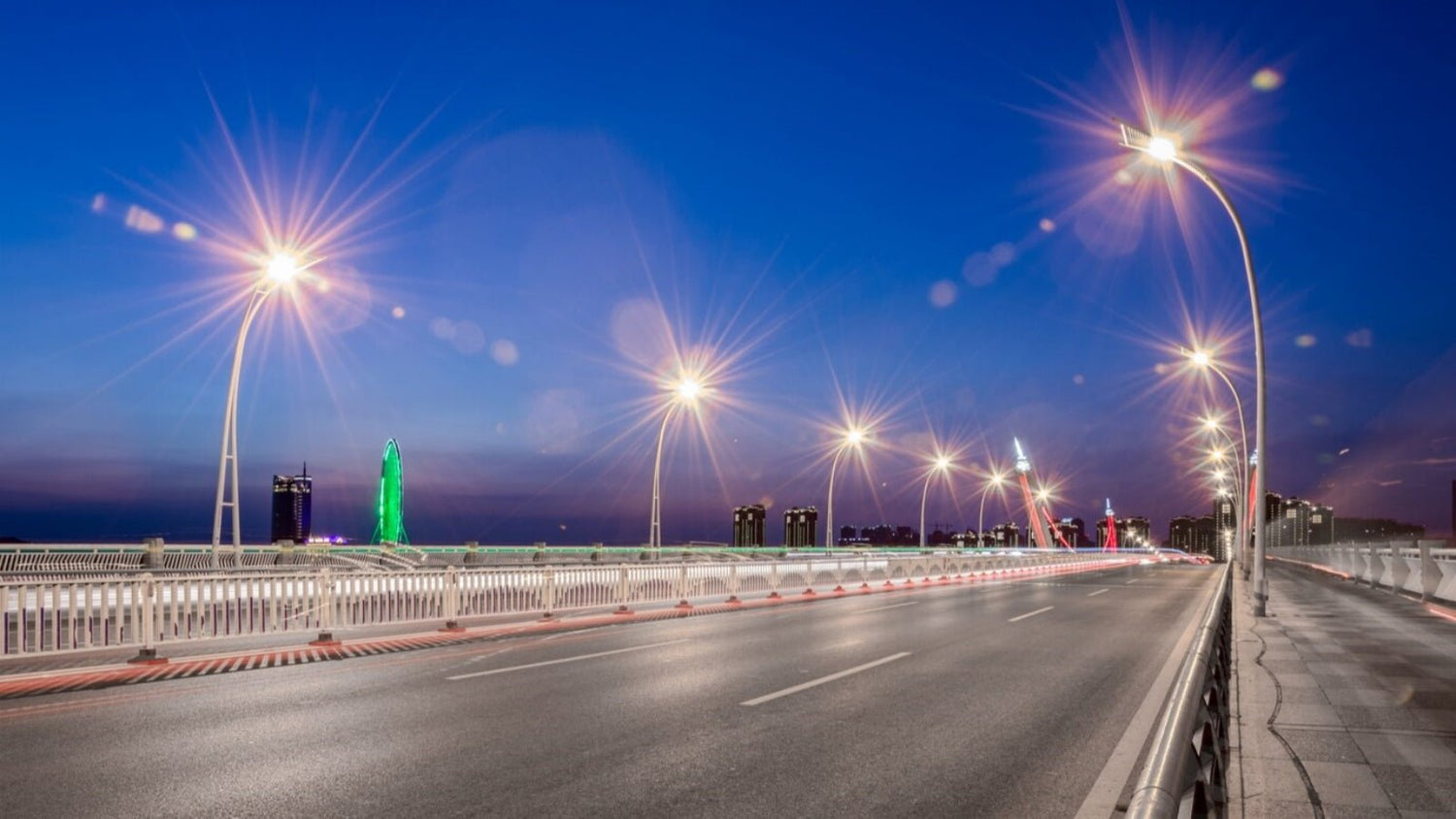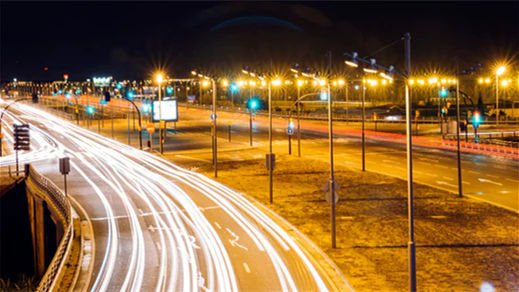Background of Popularity of Solar Street Lights:
Solar street lights have gained popularity due to increasing concerns about energy efficiency and environmental sustainability. With advancements in solar technology, solar panels have become more efficient and cost-effective, making solar street lights a viable alternative to traditional grid-powered lights. Additionally, the desire for off-grid lighting solutions in remote or rural areas has fueled the adoption of solar street lights.So are solar street lights worth it? it depends on various factors such as location, lighting requirements, budget, and long-term goals. Here's a breakdown to help you assess their worth:

Introduction to Solar Street Lights:
What are Solar Street Lights?
Solar street lights are outdoor lighting fixtures that use solar panels to harness sunlight and convert it into electricity. This renewable energy powers LED (Light Emitting Diode) bulbs to provide illumination during the night or in low-light conditions. Solar street lights are standalone systems, meaning they operate independently of the electricity grid, making them suitable for remote or off-grid locations.

Types of Solar Street Lights:
Integrated Solar Street Lights: These lights integrate all components (solar panel, LED light, battery, controller) into a single compact unit. Integrated solar street lights are easy to install and maintain, making them a popular choice for various outdoor lighting applications.
Split-Type Solar Street Lights: In split-type solar street lights, the solar panel is separated from the light fixture, connected via a cable. This design offers flexibility in positioning the solar panel for optimal sunlight exposure while allowing for greater customization in lighting design and placement.
Decorative Solar Street Lights: Decorative solar street lights combine functionality with aesthetic appeal, featuring stylish designs and decorative elements. They are often used in urban landscapes, parks, and architectural lighting projects to enhance the visual appeal of outdoor spaces.
How does it work?

Solar Panels: Solar street lights are equipped with photovoltaic (PV) solar panels mounted on top of the light fixture. These panels capture sunlight during the day and convert it into direct current (DC) electricity.
Battery Storage: The generated electricity is stored in rechargeable batteries located within the solar street light fixture. These batteries store energy for later use during the night or in low-light conditions when sunlight is not available.
LED Light Fixture: At dusk or when ambient light levels decrease, the solar street light's built-in light sensor triggers the activation of LED bulbs. These energy-efficient LEDs illuminate the area using the stored solar energy.
Charge Controller: A charge controller regulates the flow of electricity between the solar panels, batteries, and LED lights, ensuring efficient charging and discharging cycles. It protects the batteries from overcharging or deep discharging, prolonging their lifespan and optimizing performance.
Automatic Operation: Solar street lights typically operate autonomously, turning on automatically at dusk and turning off at dawn. Some models may feature additional functionalities such as motion sensors or programmable lighting schedules for enhanced energy savings and security.
Differences Between Solar Street Lights and Traditional Street Lights:

Power source: Solar street lights rely on solar energy, while traditional street lights are powered by the grid.
Installation: Solar street lights require no or minimal wiring to the grid, making installation easier and less disruptive.
Maintenance: Solar street lights have lower maintenance costs since they don't require electricity from the grid and have fewer components to maintain.
Advantages and Disadvantages of Solar Street Lights:

The advantages of solar street lights include:
Environmentally Friendly: Solar street lights operate on clean, renewable energy from the sun, reducing reliance on fossil fuels and lowering carbon emissions. By utilizing solar power, they contribute to mitigating climate change and environmental pollution.
Energy Efficiency: Solar street lights are highly energy-efficient, as they generate electricity directly from sunlight without drawing power from the grid. This reduces overall energy consumption and helps conserve natural resources.
Cost Savings: While the initial investment in solar street lights may be higher compared to traditional grid-powered lights, they offer significant long-term cost savings. Once installed, solar street lights have minimal operating costs since sunlight is free, and they require little to no maintenance.
Off-Grid Capability: Solar street lights are ideal for remote or off-grid locations where access to the electricity grid may be limited or unreliable. They provide a reliable lighting solution without the need for extensive infrastructure or grid connection, making them suitable for rural areas, parks, and highways.
Easy Installation and Maintenance: Solar street lights are relatively easy to install, as they do not require extensive wiring or connection to the grid. They also have fewer components compared to traditional lights, resulting in lower maintenance requirements and reduced downtime.
Versatility: Solar street lights come in various designs and configurations to suit different applications and lighting requirements. Whether it's illuminating streets, parking lots, pathways, or public spaces, there's a solar street light solution available to meet specific needs.
Independence from Power Outages: Solar street lights continue to function during power outages, providing uninterrupted illumination. This ensures safety and security in outdoor areas, especially during emergencies or natural disasters.
Reduced Light Pollution: Solar street lights typically use directional LEDs, which emit light more efficiently and reduce light pollution compared to traditional street lights. This helps preserve the natural night environment and minimizes disruption to wildlife.
Government Incentives and Policies: Many governments and municipalities offer incentives, subsidies, or rebates to encourage the adoption of renewable energy technologies like solar street lights. Favorable policies and regulations also contribute to their widespread adoption in urban development projects and infrastructure upgrades.
Disadvantages:
While solar street lights offer numerous advantages, they also have some disadvantages:
Initial Cost: The upfront cost of purchasing and installing solar street lights can be higher compared to traditional grid-powered lights. This includes the cost of solar panels, batteries, LED fixtures, and other components. However, it's important to note that the long-term cost savings from reduced energy bills and maintenance expenses often outweigh the initial investment.
Weather Dependence: Solar street lights rely on sunlight to generate electricity, so their performance can be affected by weather conditions such as cloudy days, rain, or snow. In regions with limited sunlight or frequent inclement weather, solar street lights may experience reduced efficiency and illumination levels.
Limited Autonomy: Solar street lights store energy in batteries to provide illumination during nighttime or low-light conditions. However, the capacity of these batteries is finite, and prolonged periods of overcast weather or consecutive cloudy days can deplete their charge. This may result in reduced autonomy and shorter operating times between recharging cycles.
Location Constraints: Solar street lights require adequate sunlight exposure to generate sufficient electricity. In densely shaded areas or urban environments with tall buildings, trees, or structures that block sunlight, installing solar street lights may be challenging or impractical. Proper site assessment and placement are essential to ensure optimal performance and efficiency.
Aesthetic Considerations: Some people may find the appearance of solar street lights less visually appealing compared to traditional lights. Design aesthetics, color temperature, and light distribution patterns may vary depending on the model and manufacturer, which can impact their suitability for certain urban or architectural settings.
Despite these disadvantages, the benefits of solar street lights, including environmental sustainability, energy efficiency, and cost savings, make them a compelling lighting solution for many outdoor applications. Careful consideration of these factors can help mitigate potential drawbacks and ensure successful deployment of solar street lighting projects.
Conclusion:
Solar street lights offer numerous benefits, including energy efficiency, cost savings, and environmental sustainability. While they require a higher initial investment compared to traditional street lights, their long-term advantages often outweigh the upfront costs. Overall, solar street lights are a worthwhile investment for both economic and environmental reasons.


































Leave a comment
This site is protected by hCaptcha and the hCaptcha Privacy Policy and Terms of Service apply.